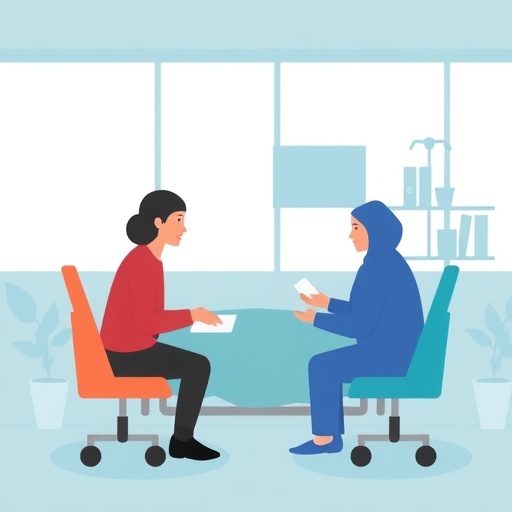It's estimated that nearly 30 percent of the 38.2 million people aged 65 or older in this country receive some form of caregiving, either for health reasons or to help manage daily activities. More than 65 percent of these older individuals rely on family members, friends, and even neighbors for assistance with things like preparing meals, bathing, taking medications, and getting transportation.
Caregiving is a significant public health topic because it affects the health and well-being of both the older adult and his or her caregivers. Recently, a team of researchers examined the various characteristics of people who serve as unpaid caregivers. They also estimated how many people serve in this capacity. The researchers took note of the health-related tasks the caregivers provided, as well as how caregiving affected care providers. The researchers published their findings in the Journal of the American Geriatrics Society.
Using information from the 2011 National Health and Aging Trends Study and National Study of Caregiving, the researchers reported that:
- The largest number of caregivers took care of older adults without dementia or a disability.
- Adult children were the largest group of caregivers.
- Many caregivers limited their participation in social activities, such as visiting family and friends or going out for enjoyment, due to caregiving responsibilities.
- Fewer than 5 percent of caregivers attended support groups. A little over 6 percent of caregivers received training, and only about 13 percent used respite care (temporary care sometimes arranged at a healthcare facility to provide short-term relief for a caregiver). The highest proportion of people using these services cared for people with both dementia and disability.
The researchers also explored unique ways that caregivers described their experiences:
| How caregiving affected caregivers | Caregivers for older adults without dementia or disability | Caregivers for older adults with dementia but no disability |
| Reported symptoms of depression or anxiety | 10% | 19% |
| Rated their (caregiver's) health as fair or poor | Nearly 20% | Approximately 25% |
| Reported caregiver burden (experienced as physical, emotional or financial hardships) | Nearly 50% | Approximately 66% |
| Dedicated significant time to caring for an older adult | 12 hours per week | 30 hours per week |
Caregivers helped with a wide range of tasks, said the researchers. They not only helped with household chores like shopping, housekeeping, and transportation but also with many health-related activities, such as making doctor appointments, ordering medicines, and assisting with diet and dental care.
The more healthcare tasks caregivers provided, the higher their risk for burden and for decreasing their involvement in social activities.
According to the researchers, although most caregivers who assisted with health-related care experienced caregiver burden, only a small minority used support services, including caregiver training, respite care, and support groups. These findings suggest the importance of evaluating the needs and capabilities of all caregivers assisting older adults, not just those who are typically thought of as high-risk. The researchers also suggested that it is also essential that we explore and implement strategies that support caregivers.
###
This summary is from "Family and Other Unpaid Caregivers and Older Adults with and without Dementia and Disability." It appears online ahead of print in the April 2017 issue of the Journal of the American Geriatrics Society. The study authors are Catherine Riffin, PhD; Peter H. Van Ness, PhD, MPH; Jennifer L. Wolff, PhD; and Terri Fried, MD.
About the Health in Aging Foundation
This research summary was developed as a public education tool by the Health in Aging Foundation. The Foundation is a national non-profit established in 1999 by the American Geriatrics Society to bring the knowledge and expertise of geriatrics healthcare professionals to the public. We are committed to ensuring that people are empowered to advocate for high-quality care by providing them with trustworthy information and reliable resources. Last year, we reached nearly 1 million people with our resources through HealthinAging.org. We also help nurture current and future geriatrics leaders by supporting opportunities to attend educational events and increase exposure to principles of excellence on caring for older adults. For more information or to support the Foundation's work, visit http://www.HealthinAgingFoundation.org.
About the Journal of the American Geriatrics Society
Included in more than 9,000 library collections around the world, the Journal of the American Geriatrics Society (JAGS) highlights emerging insights on principles of aging, approaches to older patients, geriatric syndromes, geriatric psychiatry, and geriatric diseases and disorders. First published in 1953, JAGS is now one of the oldest and most impactful publications on gerontology and geriatrics, according to ISI Journal Citation Reports®. Visit wileyonlinelibrary.com/journal/JGS for more details.
About the American Geriatrics Society
Founded in 1942, the American Geriatrics Society (AGS) is a nationwide, not-for-profit society of geriatrics healthcare professionals that has — for 75 years — worked to improve the health, independence, and quality of life of older people. Its nearly 6,000 members include geriatricians, geriatric nurses, social workers, family practitioners, physician assistants, pharmacists, and internists. The Society provides leadership to healthcare professionals, policymakers, and the public by implementing and advocating for programs in patient care, research, professional and public education, and public policy. For more information, visit AmericanGeriatrics.org.
Media Contact
Daniel E. Trucil
[email protected]
212-822-3589
@AmerGeriatrics
http://www.americangeriatrics.org/
http://www.healthinaging.org/blog/study-examines-caregiving-by-family-members-other-unpaid-individuals/
Related Journal Article
http://dx.doi.org/10.1111/jgs.14910
############
Story Source: Materials provided by Scienmag




